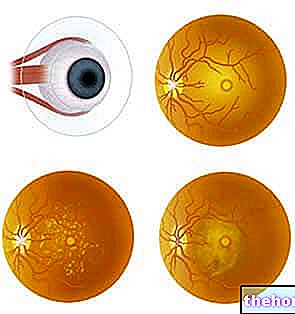What is the Optic Nerve?
The optic nerve represents the beginning of the optic pathways, that is the set of structures which, starting from the retina, connect the eyeball to the brain.
This component is essential to activate vision correctly. The optic nerve is in fact responsible for the transfer of electrical impulses resulting from the retinal receptor transduction, thus allowing visual perception.

Structure
The optic nerve represents the second pair of cranial nerves; it originates from the confluence of the retinal optic fibers at the optic disc (also called the head of the optic nerve).
Its structure is comparable to an electric cable that has many copper wires inside (more than 1,200,000 nerve fibers divided into about 200 bundles). Each single fiber (similar to a thread) corresponds to a small area of the retina, so each bundle coincides with a larger retinal region. Despite the partial crossing of the nerve fibers that occurs at the level of the optic chiasm, this arrangement is maintained up to the visual cortex.
The course of the optic nerve can be divided into four segments:
- Intraocular segment (very short portion that begins in the eyeball at the level of the optic disc, then crosses the choroid and the cribrosal diaphragm of the scleral canal to exit from the eye);
- Intraorbital segment (continues in the orbit, ie from the posterior pole of the eye to the optic canal of the sphenoid bone; it is the longest portion - about 2.5 cm - of the optic nerve);
- Intracanalicular segment (short section included in the optic canal);
- Intracranial segment (extends from the middle cranial fossa to the optic chiasm).
Like the white matter of the brain, the optic nerve has a supporting network made up of astrocytes, microglia and oligodendrocytes.
Unlike other cranial nerves that have a thin sheath called neurilemma (made up of Schwann cells), the axons of the optic nerve are lined with myelin produced by oligodendrocytes.
For this reason, the optic nerve is considered to be part of the central nervous system.
Note: being devoid of neurilemma, the nerve fibers that make up the optic nerve have very little capacity for regeneration. Therefore, any damage is irreversible and can lead to blindness.
The white matter of the brain also has the same characteristic.
Like the brain, the optic nerve is enveloped by the meninges (dura mater, arachnoid and pia mater) and has a minimal amount of CSF (between the pia mater and the arachnoid). This explains its susceptibility to being involved in the course of meningitis.
Furthermore, having common characteristics with the white matter of the brain, the optic nerve is particularly vulnerable to demyelinating diseases (multiple sclerosis) and encephalitis.
Retina and origin of the optic nerve
The retina is the photosensitive surface of the eye, formed by:
- Cones and rods: photoreceptor cells placed in the most superficial retinal layer and responsible for converting images into electrical signals (phototransduction), which are transmitted to the brain via the two optic nerves. Cones and rods, if exposed to light or dark, in fact, undergo conformational changes, which modulate the release of neurotransmitters. These perform an "excitatory or inhibitory action on the bipolar cells of the retina.
- Bipolar cells: they are connected on one side to the photoreceptors and on the other to the ganglion cells of the innermost layer, whose axons give rise to the optic nerve. The bipolar cells are capable of transmitting graduated potentials.
- Ganglion cells: their axons form a bundle that converges on the optic disc and exits the ocular globe, proceeding towards the diencephalon as an optic nerve (II pair of cranial nerves); in response to retinal receptor transduction, ganglion cells generate action potentials targeting the central nervous system.
In other words, the optic nerve is the extension of the nerve endings of the photoreceptors of the retina.
Note. Each cone, as well as each rod, controls a specific receptor field. Each image is, therefore, the result of the processing of information provided by the entire receptor population. A significant amount of processing already takes place at the retina level, thanks to the interactions between different cell types, before the information is sent to the brain.
Optical disc
The optic disc (or optic disc) represents the "onset of the optic nerve. Upon examination of the ocular fundus, this area of the retinal plane appears as a small oval area of markedly white color, since it consists of myelinated axons about to leave the globe. eye.
The optic disc is located below and medial to the posterior pole of the eye, at a distance of about 4 millimeters from the macula.
From the center of the optic disc, the blood vessels that supply the eye emerge.
Blind spot
Near the optic disc, there is the blind spot, thus defined by the lack of photoreceptors and other retinal cells. The light that reaches this area goes completely unnoticed and cannot generate electrical impulses, however an empty area is not perceived in the visual field. The involuntary eye movements, in fact, keep the image in motion and allow the brain to fill the " missing information.




























